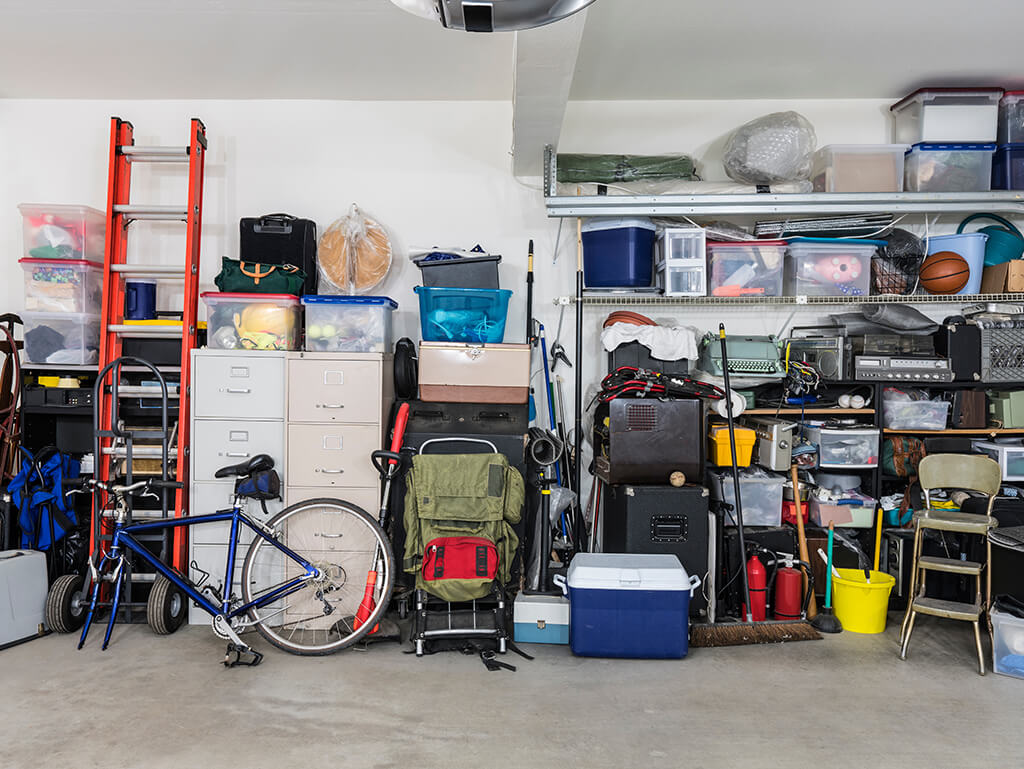Signs of a Hoarding Disorder
We have all been exposed to someone who seems to prefer living in clutter or maybe the elderly lady who has dozens of cats running around the home. It’s natural to simply think these folks are eccentric. The reality is they may be suffering from a hoarding disorder (DSM-5).

Not a lot is known about hoarding other than it tends to disrupt lives and cause significant personal issues. It’s quite possible you have a hoarding disorder yourself but don’t realize it. Hopefully, the following information will help you understand hoarding whether it be an issue you are facing or something that might be affecting a loved one.
The Hoarder Definition
The best place to always start is by defining the issue at hand. The Diagnostic and Statistical Manual of Mental Disorders – 5th Edition defines hoarding disorder DSM-5, in terms of the symptoms of the disorder. For an abbreviated hoarder definition, we go to the Merriam-Webster Dictionary:
“Someone who buys too much and doesn’t throw anything away, even as the stuff piles up and impedes normal life.” It may not sound like anything serious, but it’s a disorder that will destroy lives if left untreated.
As a point of reference, the psychiatric community classifies hoarding as part of the obsessive-compulsive disorder (OCD) spectrum. This is a disorder that affects 2%-6% of the U.S. population. Most hoarders fall between the ages of 40 to 60.
Signs of a Hoarding Disorder DSM-5
It’s very important to separate folks that collect lots of stuff from the folks who are hoarding. Collectors collect out of love for the items they collect oftentimes with the goal of someday gaining financial benefits from their collecting. Conversely, hoarders tend to accumulate stuff that seemingly has no intrinsic value to a normal person. Furthermore, there always seems to be a mental or psychological health issue at the root of their desire to accumulate things and an equal lack of their desire to discard anything.
Again, not a lot is known about hoarding disorder DSM-5. With that in mind: here are some of the symptoms of compulsive hoarding:
- Find it difficult to discard things with no regard to the usefulness
or value of the items being kept - Any thoughts of cleaning up or discarding items will create anxiety
- Parts of the home become too cluttered to navigate
- The clutter will start to create odors and draws pests like bugs and rats
- Continuation of hoarding even if no space is available for more stuff
- Strain on family relations over concerns for the hoarder’s well-being
- Mental health issues typically lay at the root cause of the disorder
- Persistent issues with organizing things and thoughts in all aspects of life
Please keep this in mind. These are considered the general symptoms of hoarding. However, the disorder could manifest itself differently from one hoarder to the next.
Of these symptoms/signs, the one that warrants the most attention is the one related to strained relationships. The loss of love and friendship often serves as the most devastating unintended consequence of hoarding.
Strained relationships often occur because of the fact people don’t understand that hoarding is actually a significant mental health issue. What usually happens is a loved one sees the clutter building up in the hoarder’s home. If they decide to broach the subject, they will often encounter some form of denial or defensive behavior.
This is a clear indication that the hoarder doesn’t recognize their illness nor do they intend to change their behavior. When concern meets reluctance, something has to give. That’s why hoarding often results in damage to important personal relationships.
BTW: Seeing hoarders’ homes can be shocking. It’s a vision you wouldn’t soon forget.
Why Do People Hoard?

As complex as this disorder is to the layperson, it begs the question, “What causes hoarding?” In other words, “what is the psychology of hoarding?” This is the area where there seems to be some level of uncertainty. However, the psychiatric community has been able to establish a representative psychological profile for hoarders. Some of the common reasons people become hoarders are:
- Having experienced trauma in life – various types of abuse
- Loss of items due to natural disasters
- Mental health issues like personality disorder, depression, and anxiety
- Exposure to a family history of hoarding
- History of extreme poverty where nothing was ever available
- Other life events like a death in the family or divorce
As you can see, nothing on this list should be taken lightly. All of these things are significant life events that can cause a myriad of emotional/mental health issues. The only way back to any level of normalcy is through treatment.
How to Treat Hoarding
Since little is known about hoarding, there doesn’t seem to be any viable ways to proactively prevent it from happening. Hence, treating the disorder after it becomes apparent is the only recourse that a victim or their family members will address this disorder.
Currently, there seem to be two primary ways the psychiatric community treats hoarding. The first way is predictable. Very often, a psychiatrist will prescribe serotonin reuptake inhibitors (SSRIs) or Antidepressants. The theory behind this option is to medicate away a patient’s depression or anxiety with the hopes it will overturn their desire to hoard.
The other way therapists are treating hoarding is through evidence-based therapies like Cognitive Behavioral Therapy and Dialectical Behavioral Therapy. Let’s take a look at these treatment modalities.
Cognitive Behavioral Therapy
Many times, it’s the way a person thinks that will drive them towards some type of mental health issue. Cognitive Behavioral Therapy (CBT) is used to address the negative consequences of a patient’s thoughts.
The theory behind this treatment option focuses on the notion that helping someone recognize how their negative thoughts are affecting their behaviors sets the stage for changing those negative thoughts. If a patient can learn to convert negative thoughts into positive thoughts, it stands to reason their negative behaviors would be reduced.

Dialectical Behavioral Therapy

Dialectical Behavior Therapy (DBT) is quite similar to Cognitive Behavioral Therapy with one very important difference. While CBT deals with negative thoughts, DBT focuses on negative feelings.
The treatment theory then becomes the recognition and conversion of negative feelings should pave the way to changing those feelings to something more positive. Doing that should result in a reduction in negative behavior.
How Can Professional Cleaners Help You
We at Clutter Trucker are in the business of cleaning up messes no matter what the sources of the messes might be. If you or a loved one are on the verge of resolving a hoarding issue, we can help you clean up the remnants of what the disorder has left behind. We encourage you to give us a call about how we can help.
 720-982-7856
720-982-7856



